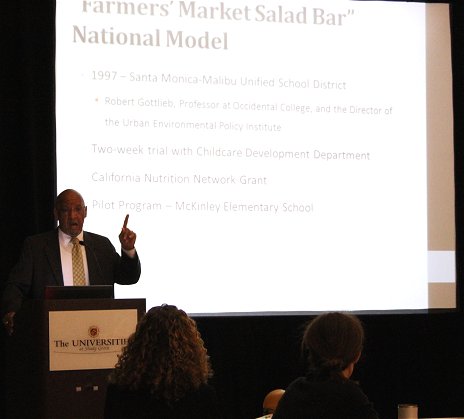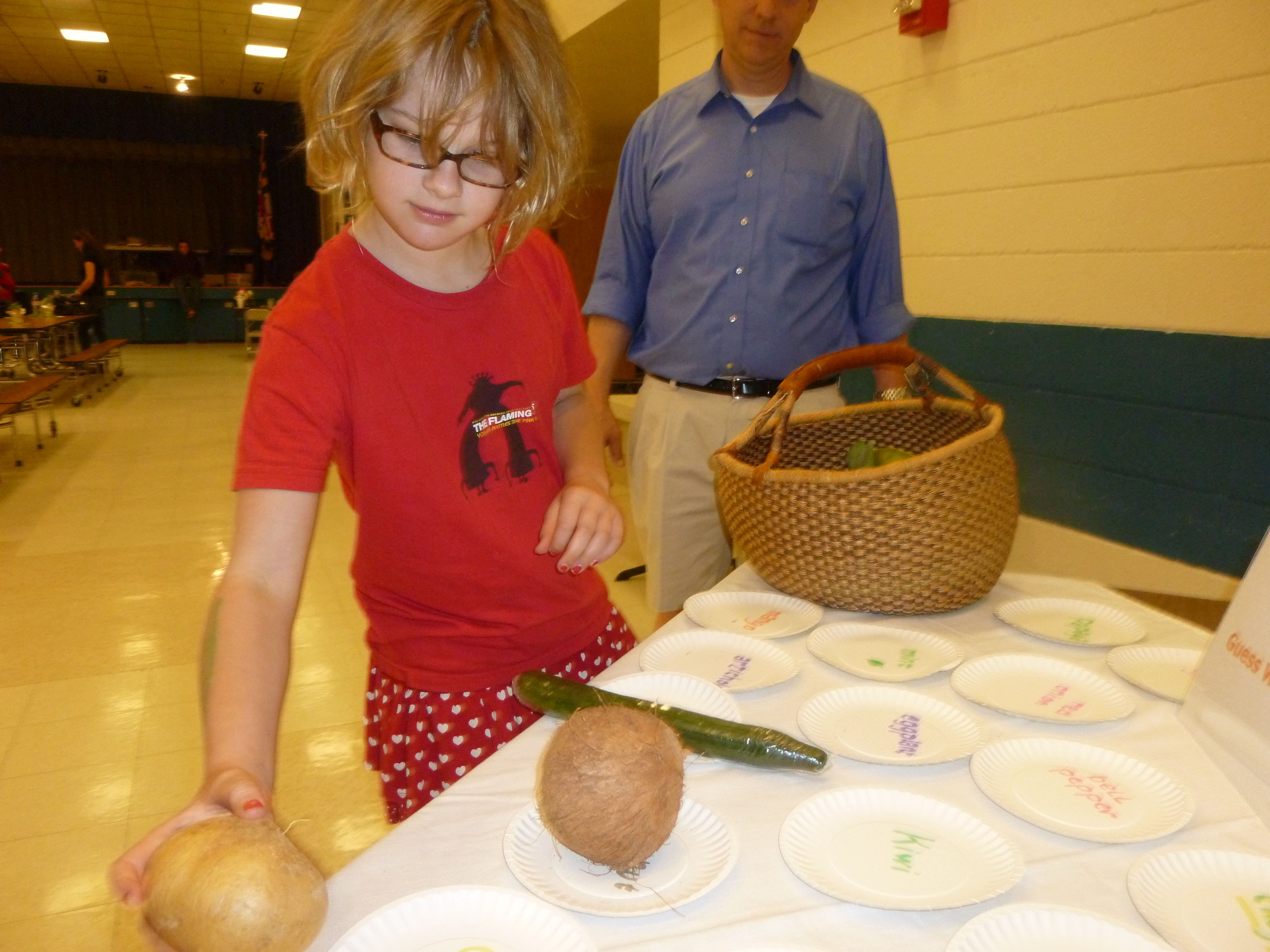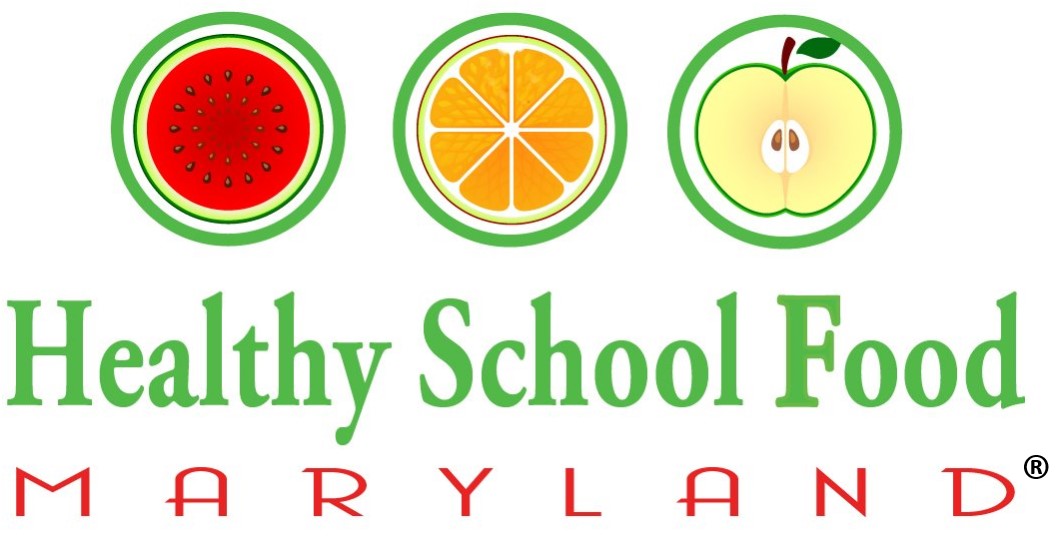| |
|
|
April 25, 2016
Healthy School Food Maryland's Salad Bar Summit was a huge
 success with over 70 attendees, including parents, teachers, farmers
and students from 5 Maryland counties and the Director of
Food and Nutrition Services for the Montgomery County Public
Schools, Marla Caplon.
success with over 70 attendees, including parents, teachers, farmers
and students from 5 Maryland counties and the Director of
Food and Nutrition Services for the Montgomery County Public
Schools, Marla Caplon.
The keynote speaker, Rodney Taylor, gave a moving talk that both
inspired and educated on how to start salad bars in elementary
schools. Having worked in small and medium school districts, Taylor,
who is now Director of Food and Nutrition Services in Fairfax
County, Virginia, is now excited to try his plan in the 10th largest
school district in the country.
 In his talk, Taylor emphasized his outrage at the projections for
the occurrence of diabetes in the current generation (1 in three
children and 2 in 3 Black and Latino children will get it),
emphasizing that those are his grandchildren and that food service
directors should feed children as if they were their own. He also
pointed out the hypocrisy of the emphasis on making sure all
children are fed properly during testing week but the apathy towards
feeding them properly the rest of the time.
In his talk, Taylor emphasized his outrage at the projections for
the occurrence of diabetes in the current generation (1 in three
children and 2 in 3 Black and Latino children will get it),
emphasizing that those are his grandchildren and that food service
directors should feed children as if they were their own. He also
pointed out the hypocrisy of the emphasis on making sure all
children are fed properly during testing week but the apathy towards
feeding them properly the rest of the time.
Of Taylor's suggestions for implementing salad bars successfully,
based on his work in the Riverside Unified School District in
California, the most important were that the produce coming from
Farmers' Markets would be fresher, tastier and more appealing to the
eye than traditional options, and the need to stock the salad bar in
a way that is visually appealing, including cut up fruits and
variety. Little discussion and few questions arose about one of the
most common concerns with salad bars, hygiene, as the simple salad
bar etiquette sheet provided by Taylor and the staffing by adults of
the bar effectively addressed those problems. Other recommendations
by Taylor were to provide a display plate of salad to demonstrate
how to make a healthy salad with a variety of items and to place the
salad bar in the cafeteria, rather than in the serving line.
Regarding costs, grants provided some of the funding for the
equipment that Taylor used in previous districts, but day-to-day
costs were not greater than with other options, as the smaller
portions taken by younger students balanced out the larger portions
taken by older students. In elementary schools, salads were sold
as part of the set price, free or reduced-priced
meals, at times served with proteins and carbohydrates as a full
meal and other times as a side salad. But in high schools,
presumably due to greater consumption, salads were sold by weight
and ultimately were not successful for him (although Fairfax has one
functional salad bar, which he is watching). As a result, in
Riverside, Taylor had a chef design a line of Panera-style
sandwiches and salads
to sell to high school students, which he
called Fresh Express. Before launching salad bars, Taylor made sure
to get the support of his Superintendent in case he did run a
deficit.
Full notes
and
Taylor's Power Point Presentation
from the Salad Bar
Summit are available on the Healthy School Food Maryland web site.
See pre-coverage of the event in Bethesda Magazine:
Advocates for Healthier Food in Schools to Gather for First 'Salad Bar Summit' in Rockville
|
|
|
Guess What Food?

|
|
|

